How To Uninstall Ubuntu On Windows 10
What do you do if you take installed Ubuntu on your PC alongside Windows but don't desire to apply Linux anymore? You now have a Linux partition on your hard bulldoze that is taking upwards space you desire to utilise for your Windows folders and files.
This article volition show you lot how to safely uninstall Ubuntu in Windows ten dual boot without losing information or applications.
The first role of this process is to remove the Linux operating organisation. Keep in mind that this will too remove all your Ubuntu information and system files. Be sure to save anything you don't want to delete somewhere else. The second part of the procedure is to change the Windows boot loader.
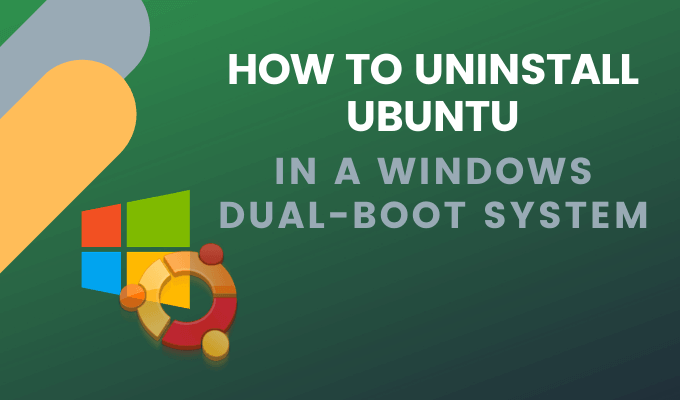
Before making whatever changes to your computer, y'all ever want to back up your files. Even if you take only been using Linux for a short period, there will most likely be data you want to save.
Also, you desire to back up all the critical data from your Windows partition. Employ an external hard bulldoze, cloud storage, or DVDs so that yous don't lose any information.
Make sure y'all have a USB or DVD of Windows. Yous can download a re-create of Windows 10 from Microsoft.
Delete The Linux Sectionalisation In Windows
- Beginning by logging into Windows. Concord down the Windows key + R and blazon diskmgmt.msc to open the Windows disk direction tool.
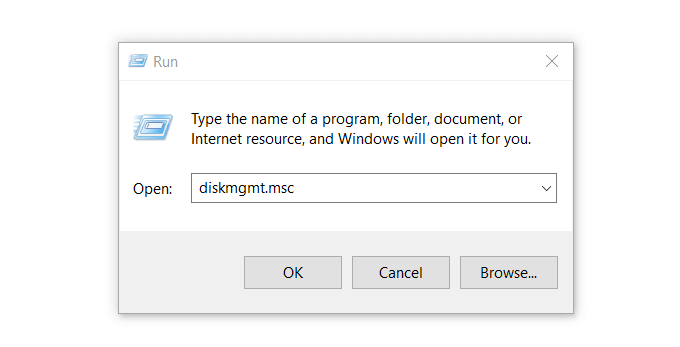
Linux partitions are differentiated from Windows because they don't have a drive number and file organisation.
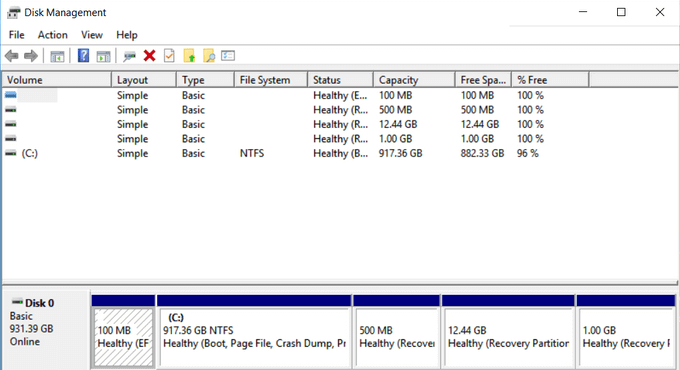
Windows partitions tin be identified by the drive characterization such equally C, D, and E. They are also usually Fatty or NTFS files.
- To delete the Linux partitions, correct-click on each i and choose Delete Volume.
- A alarm will pop-upward letting you lot know that you are trying to delete a sectionalisation that wasn't created by Windows. Then, you will be asked if y'all want to delete it. Select Aye.
Deleting the partitions will free up space on your drive.

- If you take other Linux partitions, delete them in the same manner. Right-click on Costless space and select Delete Partitioning. So click Yes when the dialogue box pops up.
- Now the free space is inverse to unallocated space. To expand your Windows partition to occupy the free space, correct-click on the Unallocated space and choose Extend Volume from the dropdown options.
- The Extend Book Sorcerer will so open. Click Next > Next > Finish.
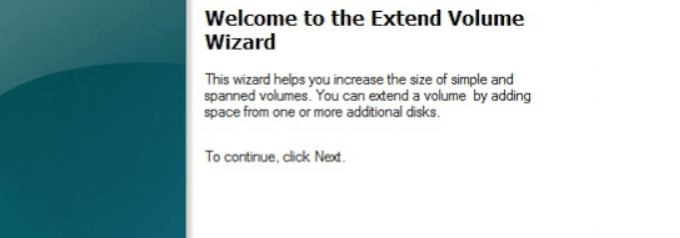
Later the process is consummate, you will see just one book pregnant you have claimed all your deejay space back to Windows.
Once you remove Linux partitions from your computer, the boot loader for Ubuntu is notwithstanding in that location and needs to be removed also. At that place are several means to do this.
Remove the Chow Bootloader
- Become to the Windows Get-go menu and click on the power icon. Then press and hold downwardly the Shift key and select Restart.
- Proceed holding down the shift primal until you see the Choose an selection screen.
- Select the Troubleshoot choice > Avant-garde options > Command Prompt. Choose your user account from the Command Prompt options and enter your password.
- This will open up a command-line terminal. Type bootrec /fixmbr and hit Enter. See the bulletin that the operation has completed successfully.
- Next type bootrec /fixboot > Enter. Come across the same message that the operation has completed successfully. Type another control bootrec /scanos > Enter. This command will scan all your disks to meet if there are any instances of the Windows OS. The time it takes to consummate depends upon your system specifications and the size and number of disks you have installed. When the browse is complete, you will run into the Windows installations you accept on your disk.
- To brand Windows your primary boot Os, blazon the command bootrec /rebuildbcd > Enter.
- If you take multiple Windows installations, y'all will see a list of all of them and where they are stored on your drive. Type A > Enter to complete the process.
- To close the terminal, type get out > Enter. You have at present successfully removed everything related to Ubuntu. Your PC volition now boot direct to Windows.
Overwrite the Linux Boot Loader with Windows Boot Loader
- To overwrite the Linux kicking loader with the Windows boot loader, insert the USB Windows Installer you downloaded above into your computer and restart it.
- After booting your organization from the USB recovery disk, click on repair your computer.
- From the side by side screen, cull the Troubleshoot choice.

- Choose Command Prompt from the next Avant-garde options screen.

- From the command prompt window, enter bootrec.exe /fixmbr. This volition fix the Windows boot loader.
- Restarting your computer now will boot it from the difficult bulldoze. Windows will now work as it should, and Linux volition no longer exist on your system.
What if You lot Don't Have a Windows Installation CD or USB?
You tin can however uninstall Ubuntu dual kicking from Windows 10 or Ubuntu as explained beneath.
- From Windows 10, run the command prompt equally Administrator.
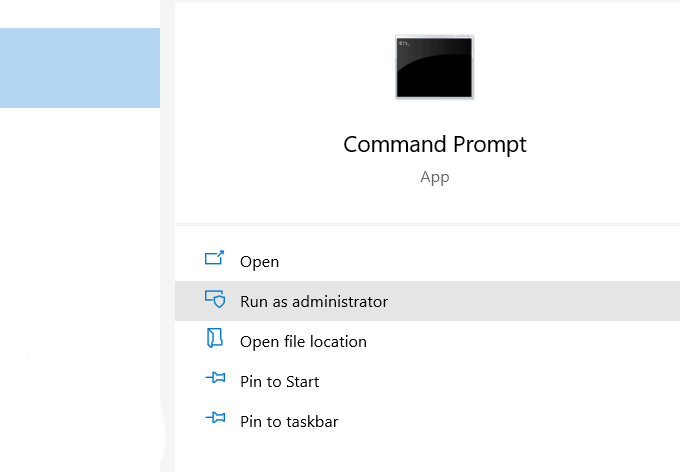
- Run the command below to set the correct EFI executable as the default kick entry:
bcdedit /set "{bootmgr}" path \efi\microsoft\boot\bootmgfw.efi
- To see if the in a higher place command worked, reboot your calculator. If successful, information technology should boot directly to Windows.
- To delete the partitions, follow the steps above, starting with typing diskmgmt.msc (the Delete the Linux Sectionalization in Windows section)
Change Kick Lodge Using UEFI
- You lot tin change the UEFI boot lodge directly from the firmware (BIOS) settings. To access the BIOS from Windows 10, click on the Get-go push > Settings > Updates & security.
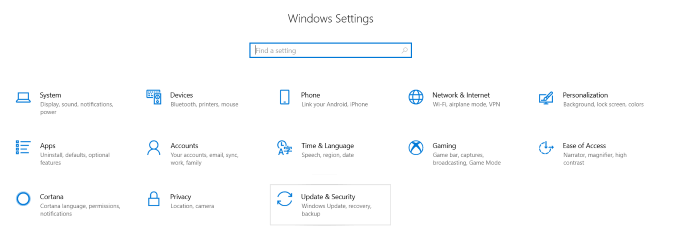
- On the left-mitt cavalcade, click on Recovery. Under Advanced startup, click Restart now.
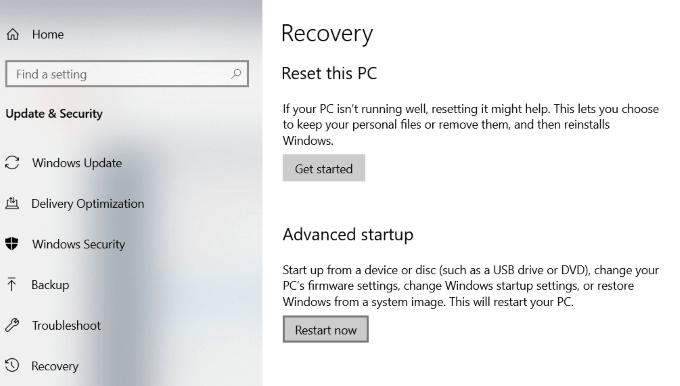
- Choose Troubleshoot > Advanced options > UEFI Firmware Settings. On the UEFI Firmware Settings screen, click Restart. Your computer will then restart and load into the BIOS.
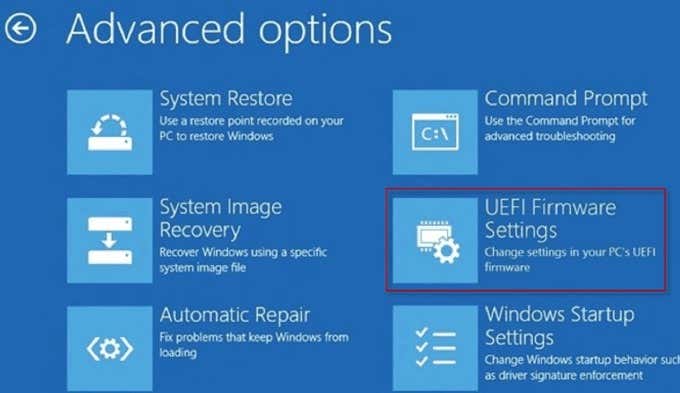
Uninstalling Ubuntu from Windows 10 dual boot is not difficult. You tin can follow one of the methods higher up to do then without losing any data.
Practice not share my Personal Information.
How To Uninstall Ubuntu On Windows 10,
Source: https://helpdeskgeek.com/linux-tips/how-to-uninstall-ubuntu-in-a-windows-10-dual-boot-system/
Posted by: kistlercaude1987.blogspot.com


0 Response to "How To Uninstall Ubuntu On Windows 10"
Post a Comment